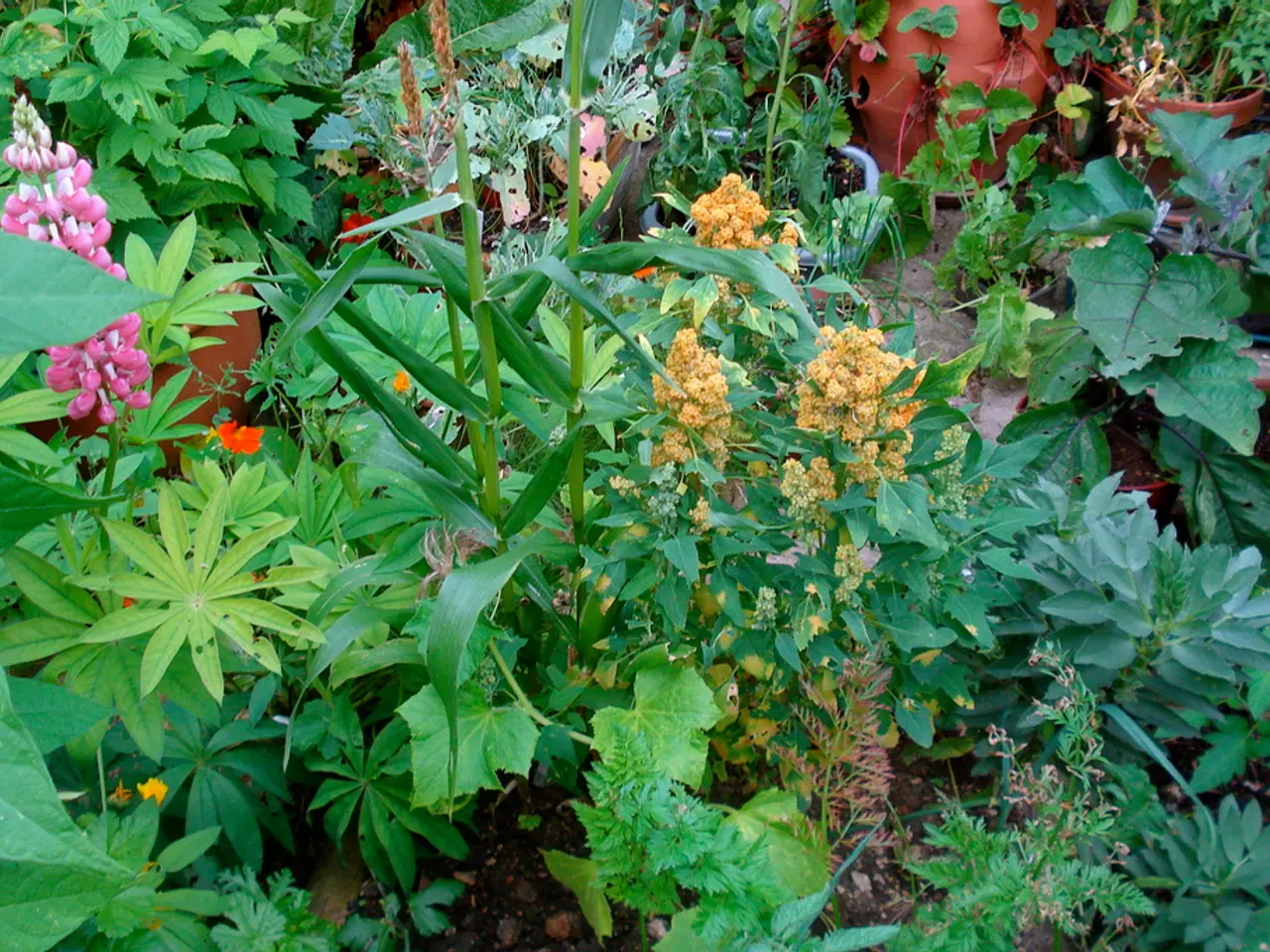Permaculture Sanctuaries for Restorative Living
In urban environments, permaculture rehabilitation gardens are proving to be a powerful tool for both mental wellness and environmental restoration. These gardens are not just spaces of growth, but sanctuaries of transformation and renewal, as one permaculture expert puts it.
Permaculture education plays a significant role in this transformation. It offers a unique approach to gardening that emphasizes sustainability, self-sufficiency, and the harmonious integration of humans with nature.
Successful examples of permaculture rehabilitation gardens can be found in various urban settings. Community gardens on abandoned lots, rooftop farms, and vertical farms are integrating permaculture principles such as organic waste recycling, biodiversity, and sustainable water use. For instance, rooftop farms in dense cities use modular soil beds, drip irrigation, and compost units to grow fresh organic produce while lowering building temperatures and enhancing insulation.
Community gardens bring residents together to co-manage and nurture green spaces, transforming urban blight into biodiversity pockets and food-producing areas. Vertical farms employing hydroponic or aeroponic systems enable intensive year-round food production on minimal land, as seen in cities like Singapore.
Practitioners demonstrate specific permaculture design strategies, such as maintaining hyperdiverse plant ecosystems with native flowering species to attract pollinators and natural pest control, along with integrated animal systems like rotational chicken grazing to fertilize and till soil naturally.
On a larger scale, cities are developing green infrastructure that incorporates permaculture-informed restoration. For example, Toronto’s extensive green roof bylaw has prompted the construction of over 1,000 green roofs, and projects to re-naturalize river corridors serve as ecological and flood management zones while boosting urban biodiversity.
Investing in permaculture rehabilitation gardens is an investment in community mental health and environmental restoration. Studies show these gardens help by lowering stress, improving mood, and boosting physical activity. They also help people connect and feel better mentally and physically.
Moreover, permaculture rehabilitation gardens differ from traditional therapeutic gardens by focusing on being sustainable and self-sustaining, blending human needs with nature’s processes, and offering deeper healing experiences. Innovations in garden design include integration of sensory healing gardens, multi-layered landscape designs, and adaptive therapeutic spaces.
Communities can start their own permaculture rehabilitation garden by gathering a team, finding land, and doing a site check. Then, create a design that includes everyone. Look for funding and get help from experts in permaculture and mental health.
Every garden starts with a spark of inspiration. If you're facing tough times or want to help others, permaculture gardens are a great way to start. By choosing the right plants, we can attract beneficial insects like ladybugs, ground beetles, and lacewings, which help control pests naturally.
There are many ways to keep learning about permaculture, including online platforms, community workshops, professional certification programs, and digital learning resources. Writing a good grant proposal should clearly state what you want to achieve, show how you will measure success, link your garden to bigger health goals, and include a detailed budget and plan.
Collecting data is key to improving rehabilitation gardens through surveys, group talks, and tracking. Effective permaculture mental health programs focus on teaching important skills. Mentorship programs are also key in rehabilitation gardens for skill building and confidence.
Permaculture rehabilitation is growing in new ways, reaching more people and places, and offering healing and helping restore nature. With over 4,000 permaculture projects actively implemented globally and more than 1,000,000 people certified in permaculture across 140 countries, it's clear that this movement is making a significant impact.
As the renowned naturalist John Muir once said, "In every walk with nature, one receives far more than he seeks." Permaculture gardens create spaces where wildlife thrives, and where people find hope, healing, and a stronger bond with nature and each other.
- Permaculture rehabilitation gardens are being utilized as a powerful instrument for both mental wellness and environmental restoration in urban environments.
- These gardens are not merely spaces of growth, but rather sanctuaries of transformation and renewal, as one permaculture expert suggests.
- Permaculture education is vital to this transformation, offering a unique approach to gardening that focuses on sustainability, self-sufficiency, and integrating humans harmoniously with nature.
- Successful permaculture rehabilitation gardens can be observed in various urban settings, such as community gardens on abandoned lots, rooftop farms, and vertical farms.
- These gardens employ permaculture principles, like organic waste recycling, biodiversity, and sustainable water management, to grow fresh produce while reducing building temperatures and enhancing insulation.
- Community gardens allow residents to collaborate in managing and nurturing green spaces, transforming urban blight into pockets of biodiversity and food-producing areas.
- Cities are incorporating permaculture-informed restoration into their green infrastructure, as seen in Toronto's extensive green roof bylaw and projects to re-naturalize river corridors.
- Investing in permaculture rehabilitation gardens leads to enhancements in community mental health and environmental restoration, with studies showing they help reduce stress, improve mood, and promote physical activity.
- Permaculture rehabilitation gardens differ from traditional therapeutic gardens by focusing on sustainability, blending human needs with nature's processes, and offering deeper healing experiences.
- Communities can initiate their own permaculture rehabilitation garden by assembling a team, finding land, creating a design involving everyone, seeking funding, and getting help from permaculture and mental health experts.
- There are numerous resources to learn about permaculture, such as online platforms, community workshops, professional certification programs, and digital learning resources, with writing a robust grant proposal being crucial for project implementation.




